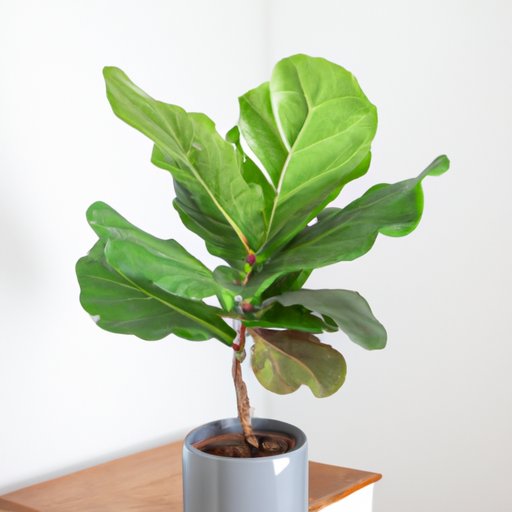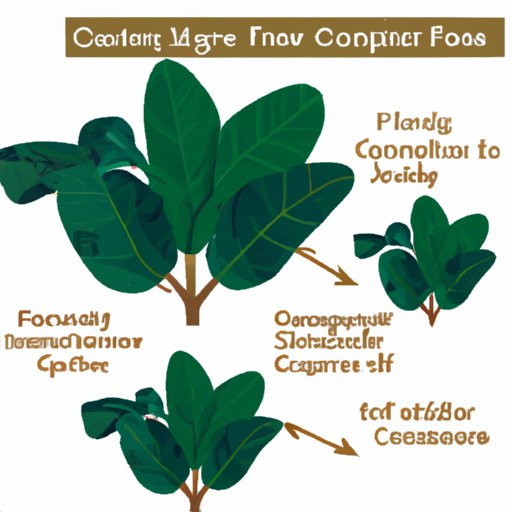
How to Care for Your Fiddle Leaf Fig: Tips for Keeping Your Plant Thriving
Welcome to the world of Fiddle Leaf Fig owners! This popular indoor plant, scientifically known as Ficus lyrata, has become a household favorite due to its tall, elegant structure and large, glossy leaves that resemble the shape of a violin (hence its name). However, with great beauty comes great responsibility, and taking proper care of your Fiddle Leaf Fig is crucial for its longevity. In this article, we will share tips and tricks for watering, lighting, fertilizing, pest control, and repotting your plant, so that you can enjoy its lush and vibrant foliage for years to come.
Introduction to the Fiddle Leaf Fig
Before we dive into the details of Fiddle Leaf Fig care, let’s provide some basic information on what this plant is. Fiddle Leaf Figs are native to tropical West and Central Africa, where they can grow up to 50 feet tall in the wild. Indoors, they typically reach a height of 6 feet and a width of 2-3 feet. The leaves of a Fiddle Leaf Fig are unique, ranging in size from 6 to 15 inches long and 4 to 12 inches wide. They have a leathery texture and shiny, dark green color. Not only is the Fiddle Leaf Fig a stunning addition to any living space, but it is also known for its air-purifying qualities that can help improve indoor air quality and overall health.
Watering Your Fiddle Leaf Fig
As with any plant, proper watering is key to its health. So, how often should you water your Fiddle Leaf Fig? The answer depends on various factors, such as the humidity level in your home, the size of your plant, and the potting mix used. Generally, it is recommended to water your Fiddle Leaf Fig once a week. However, you should not follow this schedule blindly without checking the soil moisture level first. Insert your finger into the soil about 2 inches deep – if it feels dry, then it is time to water. If it still feels moist, wait a day or two and check again. Overwatering can lead to root rot and other issues, so it is better to err on the side of caution.
When watering your Fiddle Leaf Fig, make sure to do it thoroughly, until water drains out of the drainage holes at the bottom of the pot. Discard any excess water that collects in the saucer, as standing water can cause root rot. If your plant is in a container without drainage holes, consider repotting it into a pot with proper drainage.
Another tip for watering your Fiddle Leaf Fig is to use room temperature water. Cold water can shock the roots, while hot water can scorch the leaves. It is also recommended to fill a watering can or bucket and let the water sit for a day or two before using it, as this allows any chlorine and other chemicals to evaporate.
Proper Lighting for Your Fiddle Leaf Fig
Fiddle Leaf Figs thrive in bright, indirect sunlight. Ideally, they should be placed near a large, east-facing window or a south-facing window that has a sheer curtain to filter the direct light. However, direct sunlight can scorch the leaves and cause them to turn brown or yellow, so avoid placing your plant in direct sunlight for prolonged periods.
On the other hand, lack of light can cause your Fiddle Leaf Fig to become leggy and lose its leaves. If you notice your plant leaning towards the light source or becoming sparse, it may be an indication that it needs more light.
If you do not have access to enough natural light in your home, you can supplement it with artificial lighting. Grow lights or reflectors can be used to provide the necessary amount of light for your Fiddle Leaf Fig. You can set the lights on a timer to mimic the natural lighting cycle and ensure that your plant gets at least 6 hours of light per day.
Fertilizing Tips for Your Fiddle Leaf Fig
Fertilizer is like food for your Fiddle Leaf Fig, providing the essential nutrients for growth and foliage development. However, it is important not to over-fertilize, as this can lead to nutrient burn or chemical damage to the roots. The general rule of thumb for fertilizing Fiddle Leaf Figs is to use a balanced liquid fertilizer (such as a 10-10-10 formula) once every four weeks during the growing season (spring and summer), and to skip fertilizing during the dormant season (fall and winter).
When applying fertilizer, dilute the mixture to half-strength and apply it directly to the soil, avoiding the leaves and stem. Water your plant after applying the fertilizer to help distribute the nutrients throughout the soil. It is also recommended to flush the soil with plain water once every few months to prevent salt buildup and improve soil health.
If you notice your Fiddle Leaf Fig’s leaves turning brown or yellow, it may indicate that it is receiving too much or too little fertilizer. Adjust the frequency and strength of the fertilizer accordingly.

Common Problems and Solutions for Your Fiddle Leaf Fig
Even with proper care, your Fiddle Leaf Fig may encounter some issues along the way. Here are some common problems and solutions:
Yellowing leaves: This may be caused by overwatering, underwatering, or lack of light. Check the soil moisture level, adjust your watering schedule if needed, or move your plant to a brighter location.
Brown patches on leaves: This may indicate sunburn or chemical damage from fertilizer or cleaning solutions. Move your plant to a shadier spot and be careful not to allow chemicals to come in contact with the leaves.
Root rot: This is a fungal disease caused by overwatering or poor soil drainage. If your plant’s leaves are wilting and the soil feels waterlogged, gently remove it from the pot and examine the roots. If they are brown and mushy, trim off the affected parts and repot the plant in fresh soil.
Pests: Fiddle Leaf Figs are not immune to pests such as mealybugs, spider mites, and scale. Keep an eye out for signs of infestation, such as white cottony spots on the leaves or small black bumps. You can treat the plant with insecticidal soap or neem oil, and wipe the leaves with a damp cloth to remove any visible pests.
Best Practices for Lifting and Repotting Your Fiddle Leaf Fig
Repotting your Fiddle Leaf Fig is a healthy practice that allows the roots to grow and prevents the plant from becoming root-bound. Signs that your Fiddle Leaf Fig needs repotting include roots growing out of the drainage holes, difficulty maintaining proper soil moisture, or a general lack of growth or yellowing leaves.
When lifting your Fiddle Leaf Fig out of its current pot, be gentle and avoid tugging on the stem or leaves. If the plant is root-bound, use a knife or shears to gently loosen the roots and untangle them. Select a pot that is one size larger than the current pot, and fill it with well-draining soil mix, such as peat moss, perlite, and vermiculite. Plant the Fiddle Leaf Fig at the same level as before and water thoroughly.
Conclusion
In conclusion, owning a Fiddle Leaf Fig requires some effort and attention, but the rewards are worth it. With its striking foliage and air-purifying benefits, a healthy Fiddle Leaf Fig can transform your living space and enhance your well-being. By following these care tips and troubleshooting problems as they arise, you can enjoy your Fiddle Leaf Fig for years to come.





